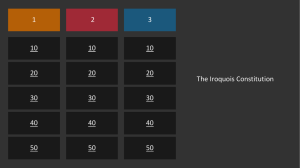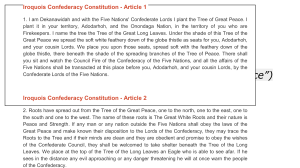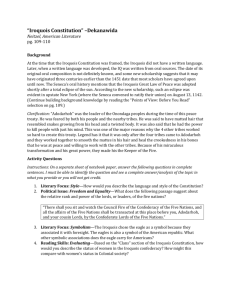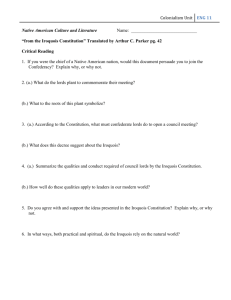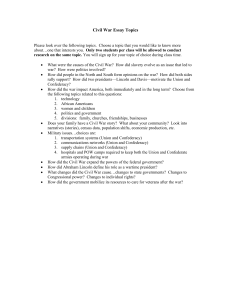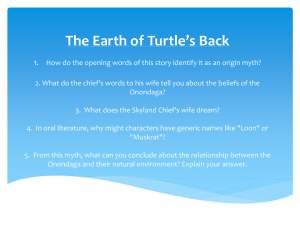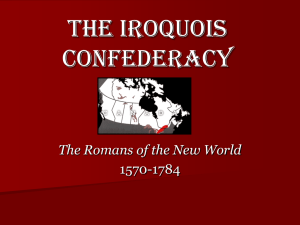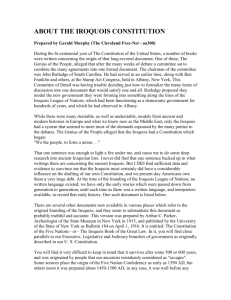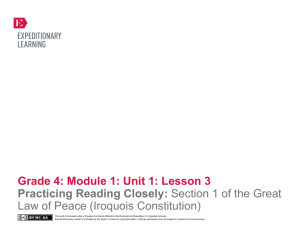Lesson 1 Iroquois Constitution.dot
advertisement
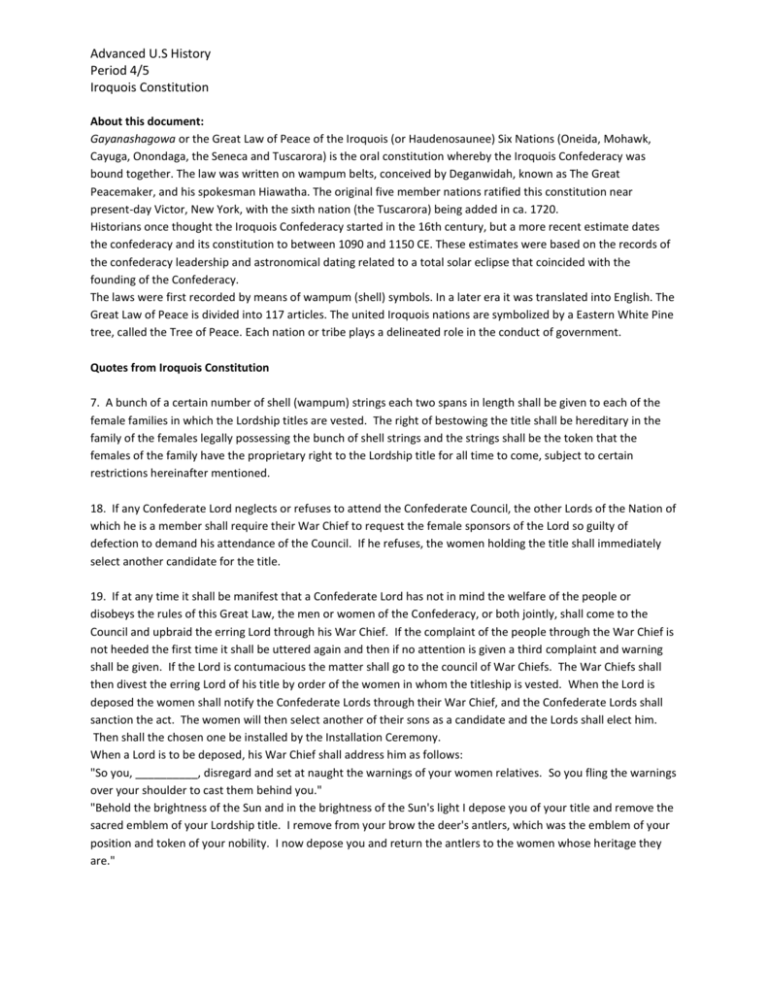
Advanced U.S History Period 4/5 Iroquois Constitution About this document: Gayanashagowa or the Great Law of Peace of the Iroquois (or Haudenosaunee) Six Nations (Oneida, Mohawk, Cayuga, Onondaga, the Seneca and Tuscarora) is the oral constitution whereby the Iroquois Confederacy was bound together. The law was written on wampum belts, conceived by Deganwidah, known as The Great Peacemaker, and his spokesman Hiawatha. The original five member nations ratified this constitution near present-day Victor, New York, with the sixth nation (the Tuscarora) being added in ca. 1720. Historians once thought the Iroquois Confederacy started in the 16th century, but a more recent estimate dates the confederacy and its constitution to between 1090 and 1150 CE. These estimates were based on the records of the confederacy leadership and astronomical dating related to a total solar eclipse that coincided with the founding of the Confederacy. The laws were first recorded by means of wampum (shell) symbols. In a later era it was translated into English. The Great Law of Peace is divided into 117 articles. The united Iroquois nations are symbolized by a Eastern White Pine tree, called the Tree of Peace. Each nation or tribe plays a delineated role in the conduct of government. Quotes from Iroquois Constitution 7. A bunch of a certain number of shell (wampum) strings each two spans in length shall be given to each of the female families in which the Lordship titles are vested. The right of bestowing the title shall be hereditary in the family of the females legally possessing the bunch of shell strings and the strings shall be the token that the females of the family have the proprietary right to the Lordship title for all time to come, subject to certain restrictions hereinafter mentioned. 18. If any Confederate Lord neglects or refuses to attend the Confederate Council, the other Lords of the Nation of which he is a member shall require their War Chief to request the female sponsors of the Lord so guilty of defection to demand his attendance of the Council. If he refuses, the women holding the title shall immediately select another candidate for the title. 19. If at any time it shall be manifest that a Confederate Lord has not in mind the welfare of the people or disobeys the rules of this Great Law, the men or women of the Confederacy, or both jointly, shall come to the Council and upbraid the erring Lord through his War Chief. If the complaint of the people through the War Chief is not heeded the first time it shall be uttered again and then if no attention is given a third complaint and warning shall be given. If the Lord is contumacious the matter shall go to the council of War Chiefs. The War Chiefs shall then divest the erring Lord of his title by order of the women in whom the titleship is vested. When the Lord is deposed the women shall notify the Confederate Lords through their War Chief, and the Confederate Lords shall sanction the act. The women will then select another of their sons as a candidate and the Lords shall elect him. Then shall the chosen one be installed by the Installation Ceremony. When a Lord is to be deposed, his War Chief shall address him as follows: "So you, __________, disregard and set at naught the warnings of your women relatives. So you fling the warnings over your shoulder to cast them behind you." "Behold the brightness of the Sun and in the brightness of the Sun's light I depose you of your title and remove the sacred emblem of your Lordship title. I remove from your brow the deer's antlers, which was the emblem of your position and token of your nobility. I now depose you and return the antlers to the women whose heritage they are."
